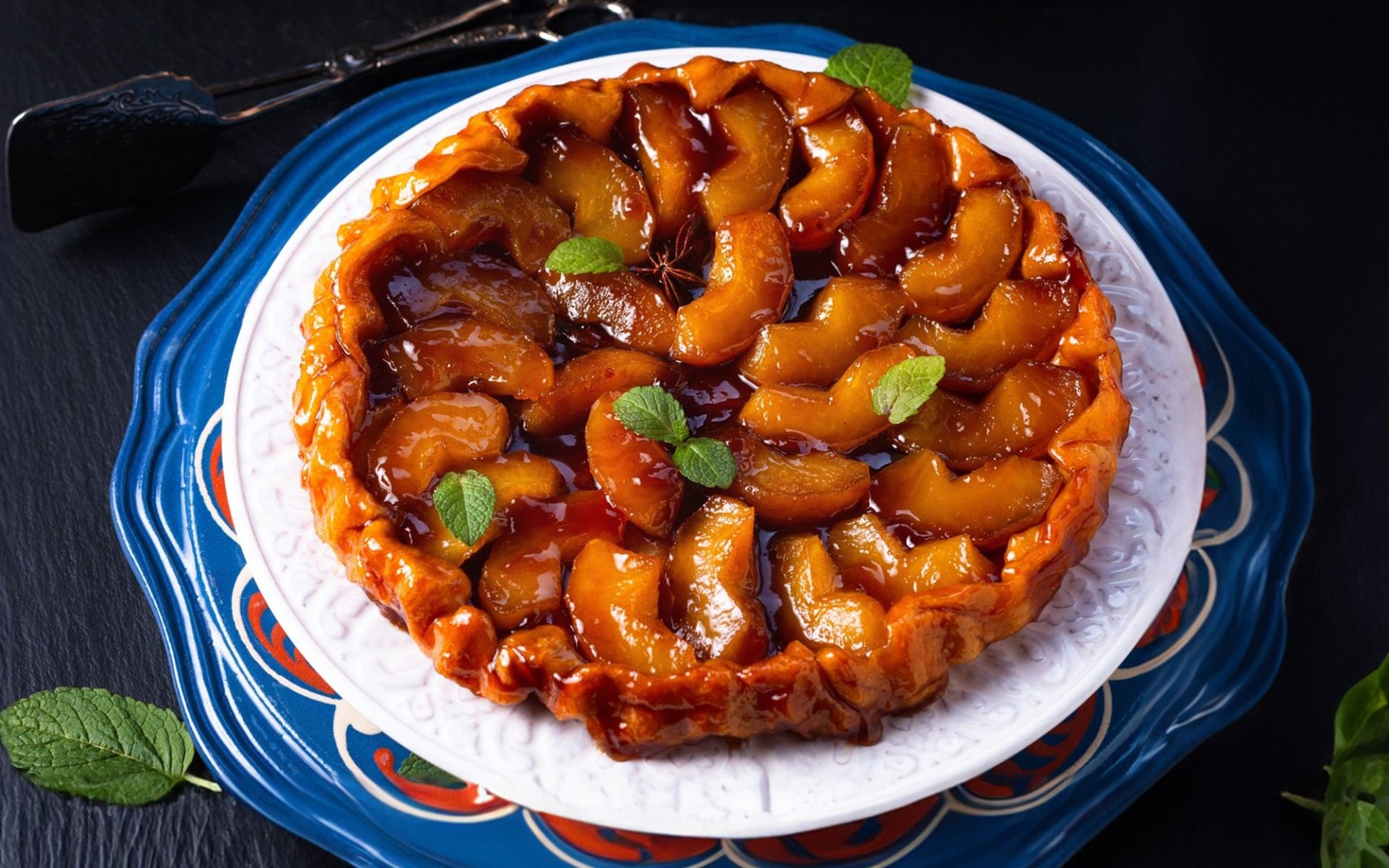Tarte Tatin

Tarte Tatin is a fascinating French dessert with an intriguing origin story, born from an accidental mishap during the preparation of a traditional apple pie. The tale of Tarte Tatin is said to have unfolded in the late 19th century at Hôtel Tatin, a small rural hotel in the town of Lamotte-Beuvron, France, managed by the two sisters, Stéphanie and Caroline Tatin.
The Origin: A Mistake That Created a Legendary Delicacy
One day, Stéphanie Tatin, one of the hotel's proprietors, was reportedly preparing a traditional apple pie in the kitchen for her guests. However, being overly busy and perhaps distracted, she left the apples simmering with butter, sugar, and caramel on the stove for too long. Upon her return, she discovered that the stewed apples had started to burn and stick to the pan, seemingly ruined. With guests soon to be served, there was no time to start fresh.
With quick thinking and ingenious problem-solving, she rapidly decided to rectify the situation. She directly covered the burnt apples in the pan with the prepared pie dough and then placed the entire pan into the oven. Once baked, she famously inverted the tart, revealing the beautifully caramelized apples on topa surprising yet appealing sight. She chose to serve this accidental creation warm. The result was astonishing: guests at the hotel were utterly delighted, praising its unique and delicious flavor, far beyond her expectations. It quickly became the hotel's signature dish, and she named it Tarte Tatin after the hotel where it was serendipitously born.
Recognition and Popularity: From Rural Inn to the Culinary World Stage
Although Tarte Tatin emerged from Stéphanies culinary oversight, this very mistake led to a unique and memorable flavor that soon gained widespread recognition. By the early 20th century, Tarte Tatins popularity surged. Curnonsky, a renowned French food critic, famously dubbed "the Prince of Gastronomes," tasted the tart and praised its distinct and delicious flavor, stating he couldn't stop eating it. This endorsement from an expert solidified the dessert's special status.
In the years that followed, Tarte Tatin began appearing in various cookbooks, and its reputation rapidly spread. Its simplicity of ingredients, combined with its distinctive flavor and innovative preparation method, made it a favorite among professional chefs and home cooks across France. Eventually, this sweet dish became a symbol of French culinary excellence, acclaimed internationally, and is now often included in French culinary school curricula.
It is said that the legendary French chef Auguste Escoffier, celebrated for revolutionizing modern French cuisine, further boosted the dessert's popularity. He featured it on the menu of the Hôtel Ritz Paris, located in the heart of Paris, one of the most famous and luxurious hotels in the world. Its presence on the menu of such a prestigious global establishment further cemented Tarte Tatin's status as an indispensable classic dessert, known to gourmands worldwide.
Evolution and Modern Tarte Tatin: Unlimited Creativity
Over time, Tarte Tatin's fame continued to grow. While the classic recipe consists of apples, caramel, sugar, and butter, countless adaptations have emerged worldwide over the years. Some chefs began incorporating various spices (such as cinnamon, nutmeg) and diverse fruits (like pears, peaches, quince, or even pineapple) to create new and more intriguing flavors. Surprisingly, some savory versions have also been created using vegetables such as tomatoes and onions, transforming it into a savory tart. Thus, Tarte Tatin can be found in various forms globally, reflecting its flexibility and adaptability to different cultures and tastes.
Today, Tarte Tatin remains a highly popular dessert, not only in France but also in kitchens and restaurants worldwide. It is cherished by both expert chefs and baking enthusiasts because it is a relatively simple dish to prepare that yields impressive results. From another perspective, Tarte Tatin is more than just a dessert; it is a unique piece of culinary heritage, showcasing the artistry of French food creationa dish that, though born from a mistake, has led to enduring deliciousness and continues to inspire culinary experimentation.


